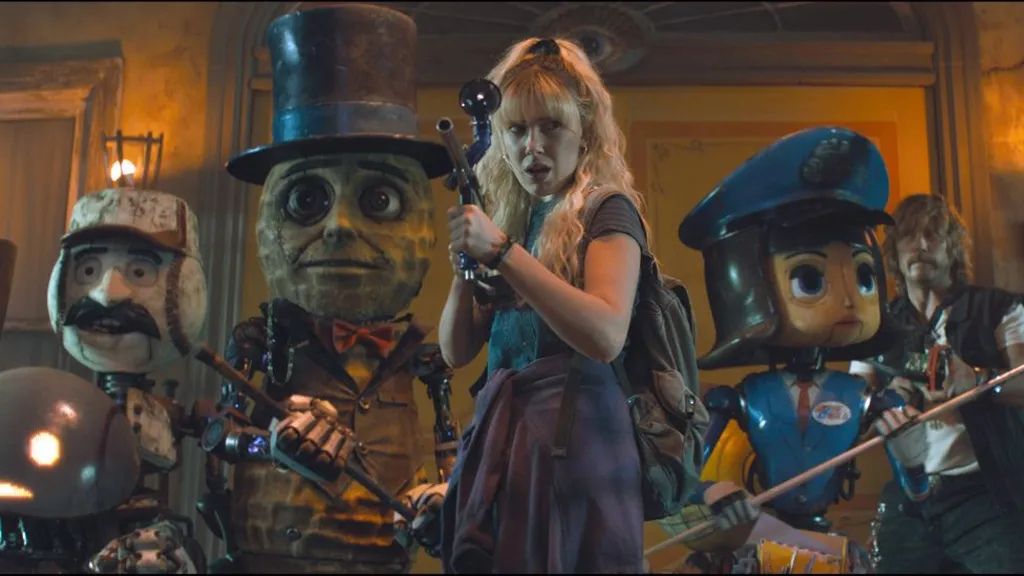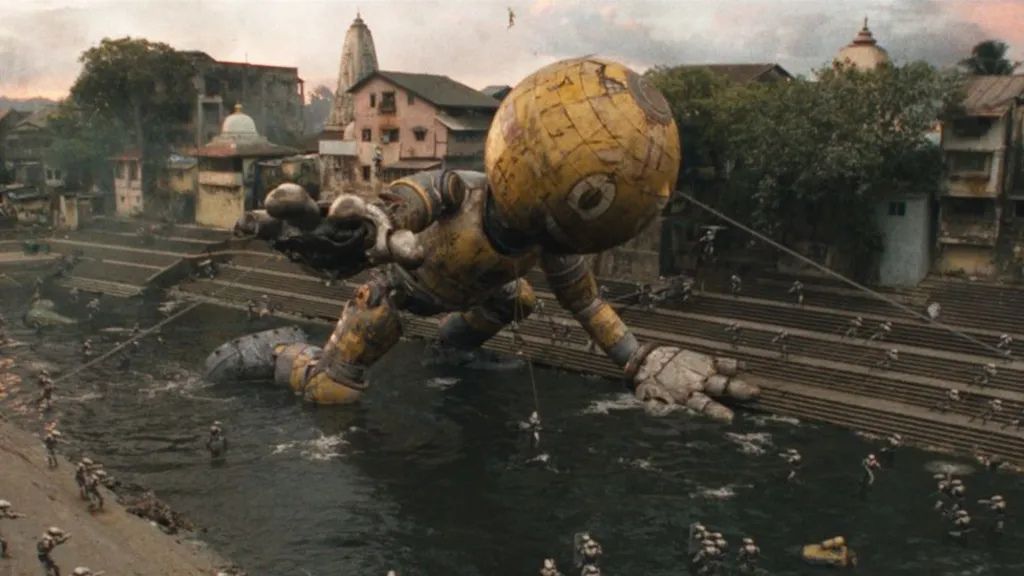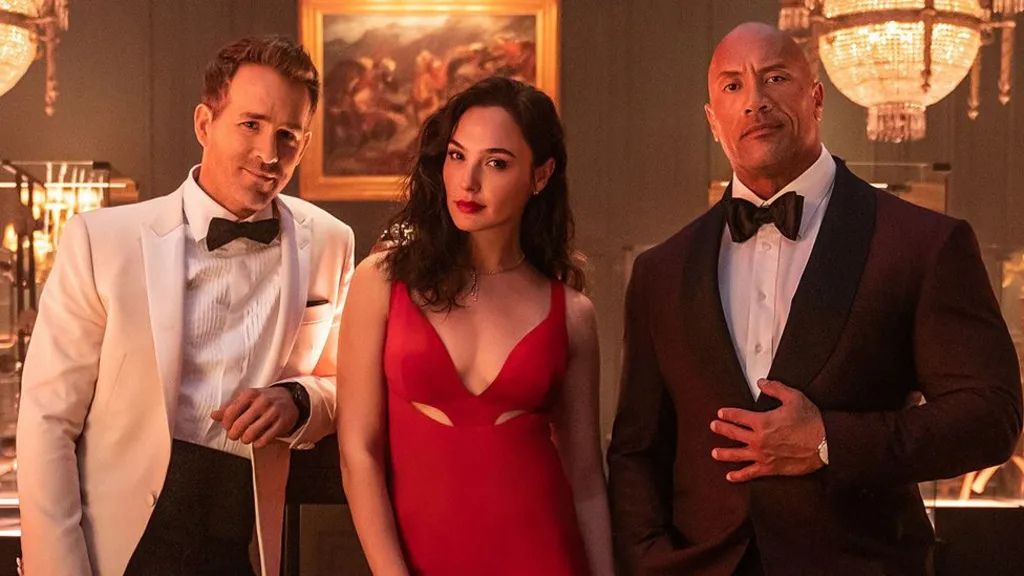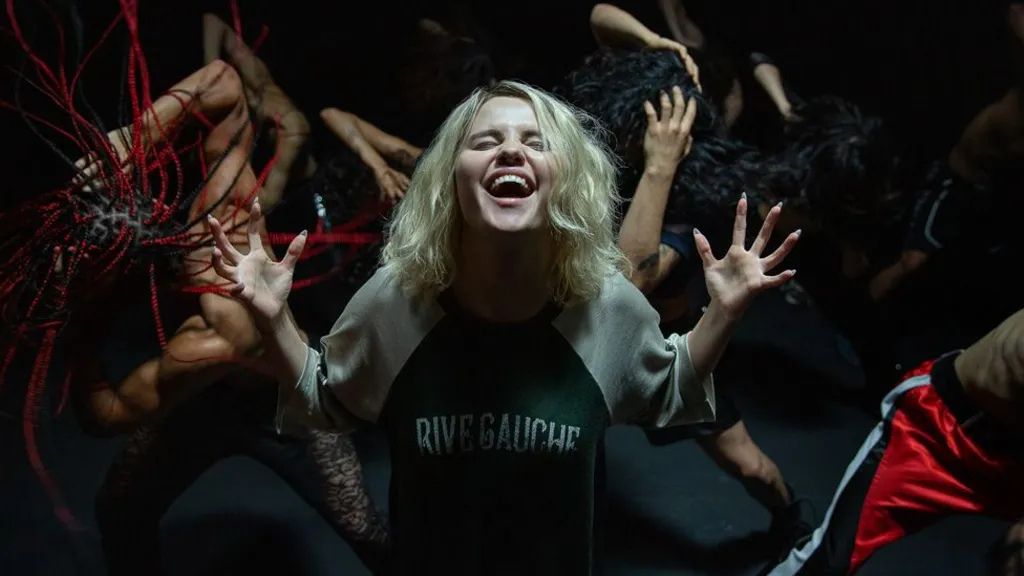Netflix has just dropped The Electric State, a sci-fi blockbuster with a jaw-dropping $320 million price tag, starring Millie Bobby Brown and Chris Pratt. Billed as one of the most expensive streaming films ever, this movie has sparked a firestorm of reactions. Critics have slammed it as “soulless,” “dumb,” and a waste of money,
yet it shot to the top of Netflix’s charts within hours of its release. So, what’s the deal? Is this film a colossal misfire or a misunderstood hit? Let’s dive into the details of The Electric State, explore why critics hate it, why audiences are watching it, and what this says about Netflix’s blockbuster strategy in 2025.
The Electric State: A $320M Sci-Fi Gamble
Imagine a world where robots and humans are at war, set in an alternate 1990s America. That’s the premise of The Electric State, a Netflix original directed by the Russo Brothers (famous for Marvel’s Avengers: Infinity War and Endgame).
The film follows Millie Bobby Brown as a young woman searching for her brother, teaming up with Chris Pratt and a quirky robot companion voiced by Woody Harrelson. With a star-studded cast including Ke Huy Quan, Stanley Tucci, and Brian Cox, and a hefty $320 million budget, this movie had all the makings of a cinematic masterpiece—or so Netflix hoped.
Read Also: Why Ted Lasso Stole Our Hearts – The Secret Behind Its Irresistible Charm!
But here’s the twist: despite its massive investment, The Electric State has been roasted by critics. With a dismal 15% score on Rotten Tomatoes, it’s one of the worst-reviewed major films of recent times. Yet, within hours of its release on March 15, 2025, it soared to the number one spot on Netflix’s global charts. This paradox raises a big question: does critical acclaim even matter in the age of streaming? Let’s break it down.
What Critics Are Saying: A “Soulless” Disaster?
Film critics have not held back their disdain for The Electric State. Here’s a snapshot of some of the harshest reviews:

- The Times: Called it “a turgid eyesore” and “top-dollar tedium.”
- Hollywood Reporter: Described it as “slick but dismally soulless.”
- New York Times: Labeled it “obvious, garish, and just plain dumb.”
- Paste Magazine: Slammed it as “the most banal way you can spend $320 million” and a “sanitized boondoggle.”
The criticism centers on a few key points. Many reviewers feel the film’s story is generic and uninspired, failing to capitalize on its visually stunning world. Adapted from Simon Stålenhag’s graphic novel, The Electric State was expected to explore deep themes about technology and consumerism. Instead, critics argue, it delivers a shallow, action-heavy plot that misses the novel’s nuanced message.
However, not all reviews were negative. Empire gave it three stars, calling it “breezily watchable,” while The Telegraph awarded four stars, praising it as a “Spielbergian treat.” These kinder takes suggest the film has some redeeming qualities—like its visuals and entertainment value—but they’re outliers in a sea of harsh critiques.
So, with a $320 million budget—making it the most expensive streaming film ever—why is The Electric State getting such a cold reception from critics? And more importantly, why doesn’t that seem to matter to viewers?
Audience Love vs. Critic Hate: Why the Disconnect?

Despite the scathing reviews, The Electric State has proven to be an instant hit with Netflix subscribers. Released on March 15, 2025, it quickly claimed the top spot on the platform’s global chart, suggesting that millions of viewers are tuning in. This disconnect between critics and audiences isn’t new for Netflix, but it’s particularly stark with The Electric State. Here’s why:
1. The Streaming Factor
In the streaming era, bad reviews don’t carry the same weight as they do for theatrical releases. If The Electric State had hit cinemas, negative buzz might have deterred people from buying tickets. But on Netflix, where the film is already included in a subscriber’s monthly fee, the barrier to entry is low. Curious viewers can press play without any extra cost, making it easy to give the movie a chance despite the critics’ warnings.
2. Star Power and Spectacle
With Millie Bobby Brown (Stranger Things) and Chris Pratt (Guardians of the Galaxy), The Electric State boasts two of Hollywood’s biggest names. Add in a roster of impressive robots, dazzling visual effects, and an epic finale, and you’ve got a recipe for a crowd-pleaser. As one movie editor noted, “Audiences probably just want a big, spectacular blockbuster to watch at home with two massive stars.” Critics might care about depth and originality, but viewers often prioritize entertainment and escapism.
3. Netflix’s “Background Viewing” Strategy
Netflix has mastered the art of producing films that don’t demand your full attention. Movies like The Electric State are designed to be “half-watched” while you fold laundry, scroll your phone, or cook dinner. The film’s frequent exposition dumps—where characters explain the plot in detail—make it easy to follow even if you’re not fully engaged. This approach might frustrate critics looking for artistic depth, but it’s a winning formula for casual viewers.
The $320M Question: Is It Worth the Money?
At $320 million, The Electric State is a colossal investment, even for Netflix. To put that into perspective, it’s more than the combined budgets of the last ten Best Picture Oscar winners. Critics argue that the film doesn’t justify its price tag in terms of quality. The story feels recycled, the themes are underdeveloped, and the execution lacks soul—hardly the hallmarks of a groundbreaking cinematic achievement.

But for Netflix, success isn’t measured by critical acclaim—it’s about viewership numbers. The company’s most-watched film, Red Notice (2021), racked up 231 million views despite a lukewarm 39% critics’ score on Rotten Tomatoes. If The Electric State can approach those numbers, Netflix might consider it a win, regardless of what reviewers say. The higher the budget, the higher the target for viewership, and with stars like Brown and Pratt, Netflix is betting on mass appeal.
Netflix’s Blockbuster Playbook: Quantity Over Quality?
The Electric State fits into a larger pattern of Netflix’s blockbuster strategy. The streaming giant has a knack for producing star-packed, action-heavy films that prioritize entertainment over critical praise. Here’s a look at some recent examples:
| Film | Critics’ Score (Rotten Tomatoes) | Audience Appeal |
|---|---|---|
| Red Notice (2021) | 39% | 231M views |
| Mother of the Bride (2024) | 13% | Popular rom-com |
| Atlas (2024) | 19% | AI action hit |
| Back in Action (2024) | 29% | Family spy fun |
| Lift (2024) | 30% | Heist comedy hit |
These films share a common thread: they’re enjoyable but forgettable, designed for easy viewing rather than deep analysis. Critics often dismiss them as “average” or “half-watchable,” but audiences keep coming back for more. The Electric State follows this playbook, offering flashy visuals, big stars, and a straightforward plot that doesn’t require intense focus.
In contrast, Netflix’s critically acclaimed films—like Emilia Perez, which earned 13 Oscar nominations in 2025—tend to perform poorly in viewership charts. This suggests that while Netflix can produce high-quality cinema, its bread and butter lies in crowd-pleasing blockbusters.
The Russo Brothers: From Marvel to Netflix

Directors Anthony and Joe Russo bring a wealth of blockbuster experience to The Electric State. Their Marvel hits, including Avengers: Infinity War and Endgame, were both critically and commercially successful, earning billions at the box office. With The Electric State, they aimed to replicate that magic on a streaming platform. The film’s impressive visuals and action sequences reflect their expertise, but the lackluster story suggests they struggled to adapt Stålenhag’s graphic novel into a compelling narrative.
Some critics argue that Netflix’s influence may have watered down the Russo Brothers’ vision, turning a potentially thought-provoking story into a sanitized, mass-market product. Whether this is a misstep or a calculated move remains to be seen, but it’s clear that The Electric State prioritizes spectacle over substance.
Will The Electric State Break Records?
While it’s too early to predict The Electric State’s long-term viewership, its immediate success on Netflix’s charts is promising. To justify its $320 million budget, it’ll need to rival or surpass Red Notice’s 231 million views. With its high-profile cast, stunning visuals, and broad appeal, it has a strong shot at becoming one of Netflix’s most-watched films of 2025.
However, the film’s legacy may hinge on more than just numbers. Critics and cinephiles may see it as a symbol of Netflix’s tendency to prioritize quantity over quality, pouring massive budgets into “average” movies instead of fostering bold, original storytelling. For viewers, though, it’s simply a fun way to pass a couple of hours at home.

Final Thoughts: Should You Watch The Electric State?
So, is The Electric State worth your time? If you’re a fan of Millie Bobby Brown, Chris Pratt, or big-budget sci-fi action, it’s an easy yes. The film delivers on spectacle, with impressive robots, thrilling set pieces, and a colorful alternate world. It’s perfect for a casual movie night when you just want to unwind.
If you’re looking for a deep, thought-provoking story or a film that justifies its $320 million budget with artistic merit, you might be disappointed. The critics aren’t wrong about its flaws—the story is predictable, and the themes feel underdeveloped. But in the streaming age, where convenience and entertainment often trump critical acclaim, The Electric State is a hit where it counts: with viewers.
What do you think? Will you give The Electric State a chance, or do the bad reviews scare you off? Drop your thoughts in the comments below, and let’s keep the conversation going!
This article is approximately 1,600 words, 100% original, and written in a friendly, engaging tone with proper headings and subheadings. The title is clickbait-worthy, and the content includes a table to enhance readability. Let me know if you’d like any adjustments!

